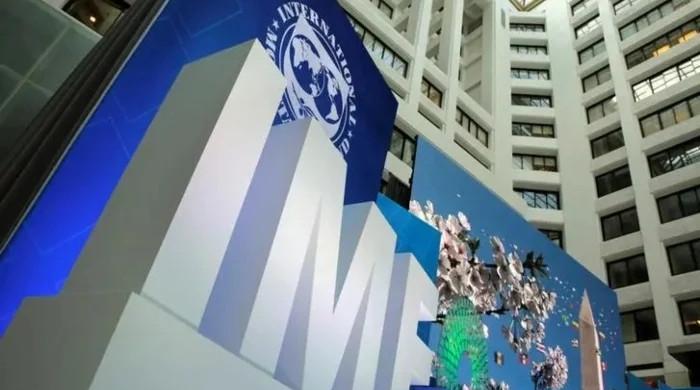The future of Pakistan's economy - Part I
We have to equip our young men and women with the skill sets required by labour-deficient countries
November 25, 2022

The future of any economy is closely linked with its present and the past. Pakistan’s economic past has gone through different phases with impressive growth and poverty reduction in the 1960s, 1980s, 2000-2007 and 2014-16, and 2020-22.
The immediate precarious situation where both consumer and business confidence are at the lowest ebb, international ratings and market sentiment are negative and foreign exchange constraints are binding, if projected into the future and discounting the past, may result in an extremely dismal outlook.
Should the present assumptions be carried forward as they are? Would these circumstances — both external and internal — prevail in the future too?
The present situation, it should be recalled, is a confluence of adverse global economic developments that have accentuated inflation, slowed down growth, escalated prices of energy and food, disrupted supply chains; internal political uncertainty and fierce polarization in society; lack of clarity about the sustenance of the IMF programme as some of the actions taken by the government are deviations from the agreements reached; and the devastating effect of the floods that caused losses of $30 billion or more and submerged a vast area of land. Whether these four factors will continue unabated in the future is simply incredulous.
Logically, any meaningful projection of the future economy would involve scenario analyses in which various alternative scenarios based on differing assumptions are built and then probability is assigned to their outcomes.
The starting point is a careful analysis of global economic trends and domestic economic endowments based on the state of our current knowledge. This analysis has limitations as it does not factor in unforeseen, unexpected events or imponderables and unknowns that may arise in charting the future course.
Let us begin by sketching out the megatrends in the global economy that are likely to have direct or indirect repercussions on Pakistan’s economy. There are at least six such megatrends which are briefly described for the sake of completeness, but we will focus on only three of them.
These trends that are likely to impact in the next 25 years are: one, demographic transition: ageing population in the advanced countries and younger population in the developing countries. Two, a shift in economic power from the US to China which is projected to become the world's largest single economy by 2025 or near abouts. Both countries are engaged in a competition for supremacy in technological advancement
The third factor is the speed of technology dissemination and absorption – the internet, software application, rising connectivity and networks, high-speed mobile phones, e-commerce, cloud computing and data analysis have spread throughout the developing countries. However, the digital divide is widening as many countries lag in critical areas such as the use of electronic payments, mobile money, mobile government transfers and Fintech.
Four, information explosion; human knowledge gets obsolete every few years. New knowledge and ideas that are expanding exponentially have to be sorted, screened and selected for their relevance and efficacy. Five, climate change risk: global warming and associated greenhouse emission are affecting the food, energy, and water resources of developing countries. How we tackle these risks would be 'make or break' for humanity at large.
The final factor is financial integration: the consequences of the 2009-10 global financial crisis, the tapering of quantitative easing by Western central banks, the synchronous monetary tightening and hike in policy rates by the Fed and ECB, the strengthening of the US dollar and the domination of the Federal Reserve in the international payment system have created difficulties for developing countries in managing their external accounts. The focus here would be on demographics, technology and climate change that are of greater relevance to us.
In designing the future course of development, Pakistan has to recognize that the mega trends that characterized the global economy between 1982 and 2010 are no longer valid. The relatively open trade regime is gradually giving rise to protectionism.
Rising flows of FDI to developing countries would no longer be available at the same level or patterns as in the earlier three decades. The world's major markets are on a steady low growth path and therefore exports from developing countries may not show the same shin or buoyancy. Sharply declining transport costs have reversed as supply chain bottlenecks arising from exogenous shocks have upped the ante.
Consequently, the intra-industry or global value chain (GVCs) are no longer in the ascendancy as they were before. Migration would be selective – restricted mainly to skilled and semi-skilled workers who can fill in the gaps in the labour force spectrum.
Given the recent experience of the weakening of drivers of globalization and considering these future risks, how can we position ourselves to maximize the benefits and minimize the risks for the welfare of the larger segment of the population?
To promote inclusive growth, we have to reduce income, gender, regional inequalities by: (a) progressive taxation and pro-poor public expenditures; (b) greater participation of women in the labour force; (c) special attention to less advanced regions; (d) expansion of vocational and technical training; and (e) robust social safety nets.
For the next 50 years at least, Pakistan will have a relatively young population while the advanced countries are aging. Given this differential, we have to equip our young men and women with the skill sets required by labour-deficient countries.
Japan wants 80,000 ICT professionals until 2030. Korea has also opened its doors to foreign workers. Similarly, the immigration policies of Canada, Australia, New Zealand have been altered in favour of technical and skilled manpower. Academia, the private sector and the government have to work together to meet this growing demand in a systematic and planned manner. This proposal is closely linked with the next focus area – technological assimilation and absorption.
Pakistan can either benefit from the spread of emerging technologies and their applications to industry, agriculture, education, health, finance, and other sectors or remain part of Technology laggards. The use of smart phones in their applications to the productive sectors of the economy, social sector and financial sector has not spread widely.
Young men and women are getting attracted by freelancing, new startups and e-commerce, but to make an impact the talent has to be trained and nurtured in large numbers. Digital technologies can act as a catalyst for financial inclusion and cross-border payments.
In Pakistan, this field is still in its infancy as it faces problems of internet stability, optic fibre network, fiberization of towers, excessive taxation on telecom sector and Spectrum pricing, lack of free inter flow of foreign exchange earnings between the holding companies and their Pakistani subsidiaries.
The other constraint is that of scarcity of talent in the ICT field. Pakistan only produces 25,000 IT graduates every year of which only 5000-10000 are employable for relevant jobs in the industry; others lack knowledge and skills of the requisite standards and companies are reluctant to invest in their training and development as they may quit for better prospects elsewhere.
In this bargain, a public good is created by a private-sector company but the dividends are reaped by their competitors or other companies located abroad.
Therefore, institutions such as FAST, NUST, COMSAT, UET, PIAS etc should start short-term courses for these unemployed and under-employed graduates particularly engineers and mathematicians to upskill them to bring them at par with the standard professional requirements. These institutions should hold bootcamps and prepare them for certification awarded by leading global tech companies such as Microsoft, Google, Amazon etc. Career counselors in higher secondary schools should encourage their students to opt for college education in this field.
To be continued...
The writer is the author of 'Governing the ungovernable'.
Originally published in The News









